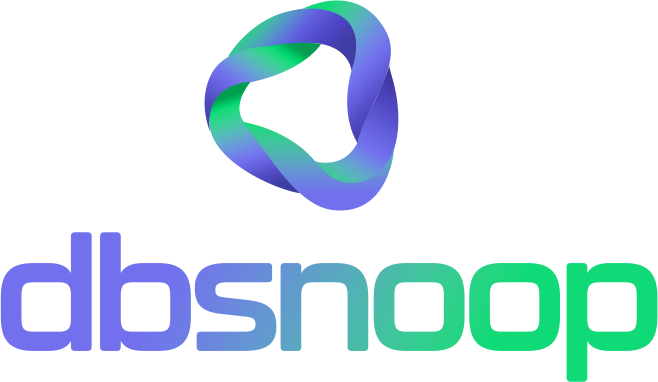
Elastic ELK is a powerful and flexible platform composed of three main tools: Elasticsearch, Logstash, and Kibana, which together form the famous ELK Stack. This platform is widely used for log monitoring and analysis, allowing companies to collect, process, and visualize data from various sources in real-time. The Elastic ELK Stack has become a popular choice among DevOps, SREs, and IT infrastructure administrators.
In this article, we will explore what Elastic ELK is, its main functionalities, and how it can help transform the data from your IT infrastructure into valuable insights.
Main Components of the ELK Stack
- Elasticsearch: Elasticsearch is a distributed search engine and analysis engine that allows the storage and consultation of large volumes of data in an agile and efficient way. It indexes and organizes data so that they can be easily searched and analyzed in real-time.
- Logstash: Logstash is a data processing tool capable of ingesting data from different sources (logs, metrics, files, events) and sending them to Elasticsearch for analysis.
- Kibana: Kibana is the visualization interface for the ELK Stack. It allows the creation of interactive dashboards to view data stored in Elasticsearch, facilitating the identification of patterns, trends, and problems.
How Does the ELK Stack Work?
The Elastic ELK Stack works in three main steps:
- Data Collection from Various Sources: Logstash collects logs and data from various sources, such as servers, applications, events, security systems, etc. It processes this data and sends it to Elasticsearch.
- Indexing and Search with Elasticsearch: Elasticsearch organizes and indexes the data, allowing for rapid and real-time searches. It is optimized to handle large volumes of logs, making it ideal for dealing with large-scale data.
- Visualization with Kibana: Kibana allows the creation of custom dashboards that display logs and events in real-time, helping to identify performance issues, anomalies, and other failures by analyzing both real-time and historical data.
The result is a platform that allows monitoring performance over time and helps IT teams quickly identify problems and failures in critical IT systems.
Main Features of the Elastic ELK
- Log Collection from Multiple Sources: With Logstash, the ELK Stack can ingest data from different sources, such as servers, applications, networks, and security systems.
- Real-time Search and Analysis: Elasticsearch allows for fast and real-time searches and analysis of large volumes of data, helping IT teams identify performance problems, bottlenecks, and failures in critical systems.
- Customizable Dashboards with Kibana: With Kibana, it is possible to create fully customizable dashboards, interactive and dynamic, making the analysis of logs more intuitive and based on real-time insights.
- Centralized Monitoring Support: The ELK Stack can consolidate data from multiple systems and applications into a single interface, simplifying the analysis of logs and infrastructure performance.
- Alerts and Notifications: The ELK Stack can be configured to generate real-time alerts for performance, failures, or any excessive or anomalous activity, helping IT teams take preventive action.
- Data Scalability: The ELK Stack’s ability to store and process large volumes of logs makes it ideal for companies of all sizes, from startups to large corporations.
- Integration with Security and DevOps Tools: Elastic ELK integrates easily with different security and monitoring tools, such as Beats, Grafana, and other solutions, expanding the capabilities of monitoring and analysis.
- Historical Data Analysis: Elasticsearch stores both real-time and historical data, allowing for the performance analysis of log sources and infrastructure systems over time.
Benefits of Using the Elastic ELK Stack
- Centralized Log Management: The ELK Stack allows you to manage and visualize logs from multiple systems in one place, making it easier to identify performance problems, bottlenecks, and infrastructure failures.
- Real-time Data Analysis: Elastic’s Elasticsearch enables real-time searches and analyses, allowing IT teams to make informed decisions quickly.
- Visualization Flexibility: Kibana allows the creation of highly customizable dashboards and interactive visualizations, facilitating the interpretation and analysis of logs.
- Cost-effective: Elastic ELK Stack is an open-source solution, making it accessible to companies that need efficient monitoring without high licensing costs.
- Scalability: The Elastic ELK Stack is scalable and can handle both small and large volumes of logs, making it ideal for businesses of all sizes.
- Simple and Fast Installation: The ELK Stack is easy to install and configure, requiring minimal technical knowledge to start monitoring logs.
Why the ELK Stack is Ideal for Companies of All Sizes
The Elastic ELK Stack is widely adopted by companies that need centralized log management and analysis in an efficient way. It is widely adopted by startups, SMEs, and large corporations that operate in cloud-native environments, microservices, and distributed infrastructures.
- Startups and SMEs: For small to medium-sized companies, the ELK Stack offers a free and open-source solution for efficient log management and system monitoring.
- Large Corporations: For larger companies with more complex infrastructure, the ELK Stack brings high scalability, real-time data analysis, and centralized management of distributed infrastructure.
- Cloud-native and Distributed Infrastructures: The ELK Stack is ideal for companies operating with cloud-native environments, microservices, containers, and Kubernetes, offering insights in real-time on the state of distributed systems.
Comparison Between Elastic ELK Stack and Other Tools
The Elastic ELK Stack is widely recognized as a robust and popular monitoring solution for log analysis. See how it compares to other popular tools on the market:
- Elastic ELK vs. Splunk: Splunk is a premium tool, and although it is more robust and complete, the Elastic ELK Stack offers a powerful platform without the licensing costs of Splunk.
- Elastic ELK vs. Prometheus: Prometheus is another popular monitoring tool, but it focuses on metrics and performance monitoring. The ELK Stack offers greater flexibility in historical event analysis.
- Elastic ELK vs. Grafana: Grafana is an advanced solution for visualization and dashboards, but the ELK Stack integrates directly into Elasticsearch, making it an all-in-one solution for monitoring and analyzing services.
Pricing of the ELK Stack
The Elastic ELK Stack is an open-source and free solution, making it accessible for any company that needs log management and analysis. However, for companies seeking premium resources, advanced features, cloud security, and managed services, Elastic Cloud, a commercial version of Elastic, offers plans based on data usage.
Conclusion
Elastic ELK Stack is a flexible and efficient platform for centralized logging and real-time analysis, widely used by companies of all sizes. With the ability to create rich dashboards and customized visualizations, ELK Stack is a powerful solution to transform infrastructure and application data into actionable insights. Its open-source model, combined with scalability, makes Elastic Stack ideal for both startups looking for an accessible solution and large corporations seeking scalability and robust monitoring.
However, dbsnOOp stands out compared to ELK Stack by offering specialized database monitoring and incorporating artificial intelligence and predictive insights. While ELK Stack centralizes logs from various sources, dbsnOOp goes further, delivering detailed performance analysis for databases and process automation, making it more suitable for companies needing to optimize complex data infrastructures. Additionally, dbsnOOp is quicker when it comes to implementing intelligent alerts and reducing MTTR, making it a clear choice for companies focused on improving the overall performance of their critical systems over Elastic Elk.
Beyond its specialized focus on data infrastructure, dbsnOOp also offers a more streamlined user experience compared to Elastic ELK Stack, providing predictive tools that facilitate performance optimization. For companies seeking immediate returns in terms of SLA and operational efficiency, dbsnOOp offers a more focused and robust solution, especially for managing database systems and IT infrastructure.
Give it a try for 14 days, no burocracy, no credit card
Learn more about Flightdeck!


